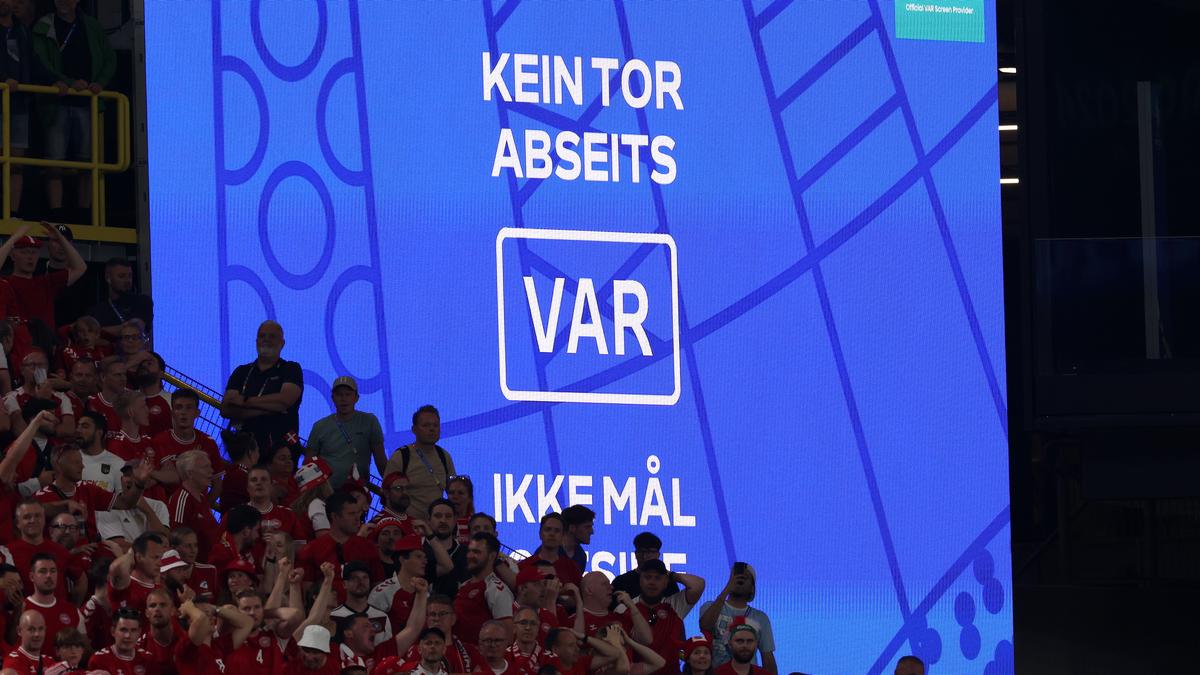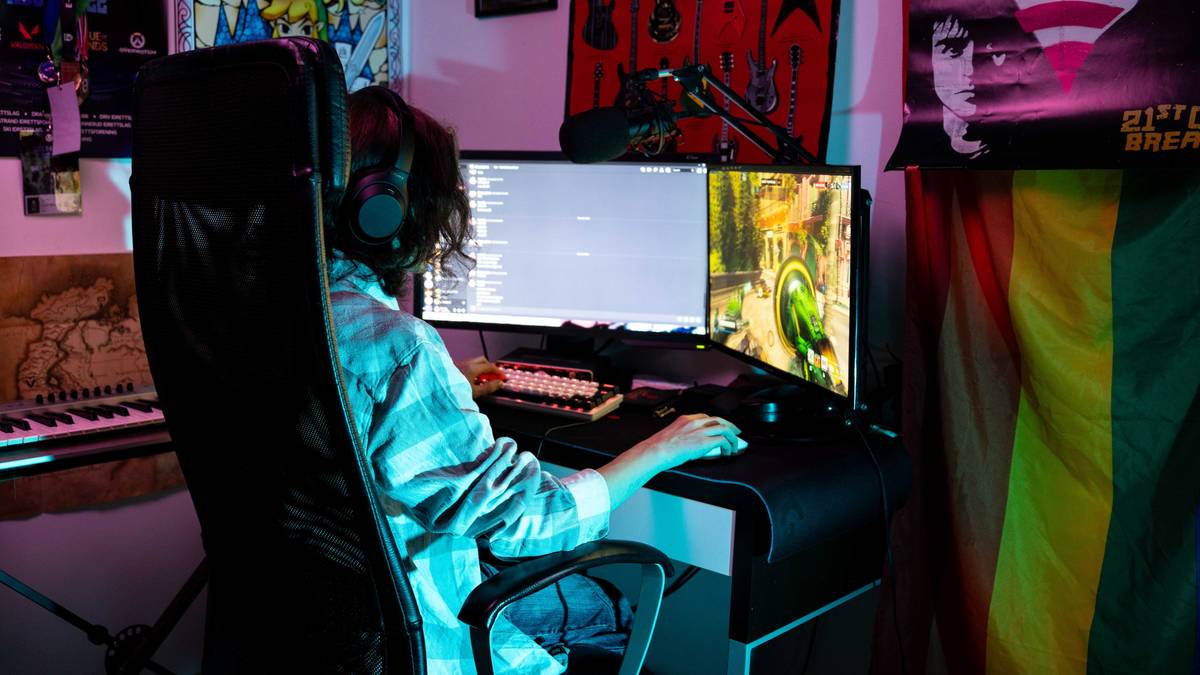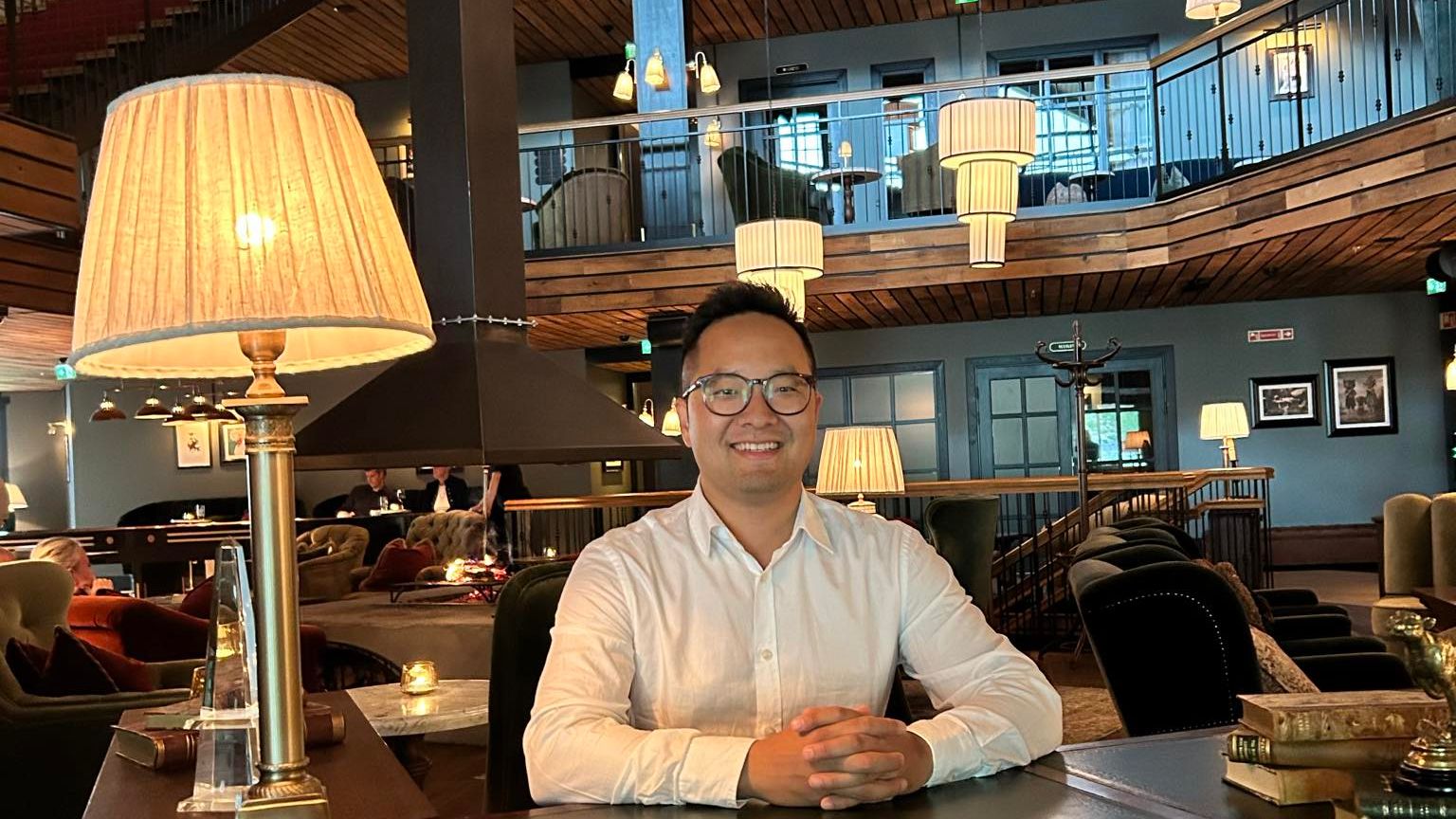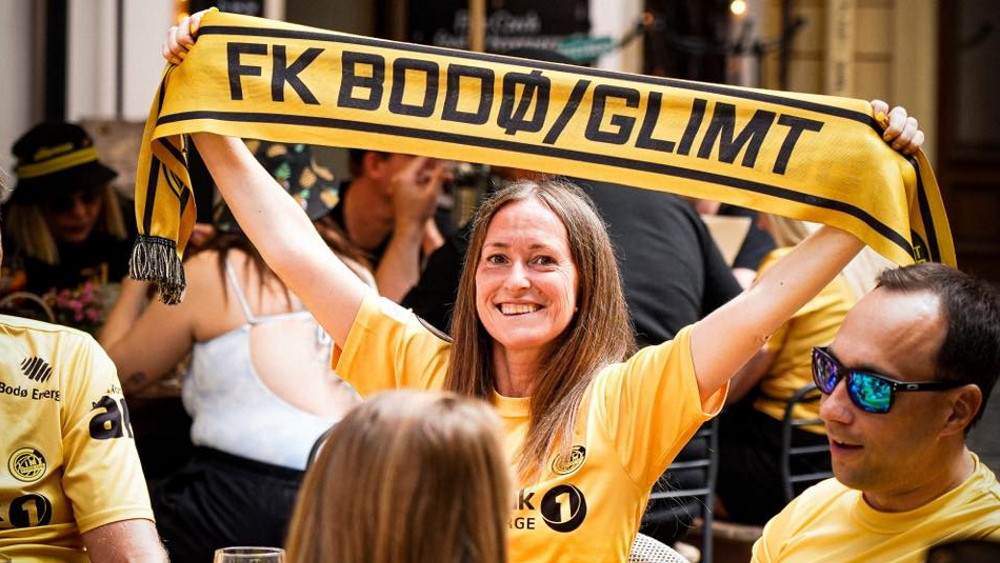Shopping
A Ukrainian refugee in Norway shares her story, of hard times and hope – Norway’s News in English — www.newsinenglish.no

SPECIAL FEATURE: More than 6.3 million Ukrainians have fled their homeland since Russia’s full-scale invasion on February 24, 2022. Since then, Norway has accepted the largest number of Ukrainian refugees among the Scandinavian countries, more than 70,000, and the figure continues to grow. Ukrainians are now the second-largest immigrant group in Norway, and Margo Dobrovolska is one of them. She agreed to share her story here, with readers of NewsinEnglish.no.
As a Ukrainian refugee, you often need to respond to three main questions during brief chats with those you meet. Telling people you’re from Ukraine isn’t the best icebreaker. Despite the rich culture of Europe’s largest country, most people have discovered Ukraine only through the brutality of the Russian Federation’s war crimes. You can see pain in the eyes of the person you’re talking to, followed by the three questions: Which city are you from? Is everything all right with your family? How did you get to Norway?
I hope my story will help you get to know at least this refugee better, make this war better known to you through the personal experience, and the next time I meet someone new I can just send the link.
When I was 15, I had to move to Poland because my mom got a job there. Emigration was something Ukrainians did when they couldn’t make enough money at home to pay the rent or electricity bills. So we moved to Poland for a better chance at life.
It was a big change for me, starting school in a new country where everything was different. We were poor so I had to share a room with my mother and uncle. At the age of 16, I found a job and started working at a fast-food place called Kebab Oslo in the town of Nowy Sacz, having no clue that one day I would be living in Oslo (the city, not the kebab).
I dropped out of school and moved out of our home. At 17 I spoke Polish but chauvinism, Catholic traditions and the feeling of living in a foreign country didn’t make sense. I missed my friends and our connection. I spent most of the time on the phone with girls in Ukraine, and the only rational plan for meeting my career goals was to move back to Ukraine and become the greatest stand-up comedian in the country, maybe in the world.
The best years of my life have been in Kherson, where I worked as a part-time tattoo artist and waitress. I was posting silly videos on social media, dating boys and girls, and having fun somewhere I belonged. However, when I realized there was no stand-up comic scene in my hometown, an important question arose: Where should I move in order to perform on a real stage and not just in front of my friends in the kitchen? I chose from among three big cities with rapidly growing stand-up scenes: Kharkiv, Kyiv, and Lviv. The decision to move to Lviv in western Ukraine shortly before the invasion may have saved my life.
I’m originally from Kherson. Before the full-scale invasion, the population of Kherson was around 330,000. My childhood was filled with sunshine in Southern Ukraine, while global warming was heating our region. By 2020, almonds and pineapples were growing better around Kherson than traditional crops. Despite these new nuts and fruit, the symbol of Kherson has always been its juicy watermelons, with which Ukrainian soldiers were greeted after liberating the city on November 11, 2022. Kherson was under occupation for 256 days.

On March 2, 2022, Russian administrative authorities took over the Kherson City Council and managed to reduce the city’s population by 20 per cent within a year. In the early days of the war, Kherson residents participated in demonstrations with more than 5,000 people, but the number of active citizens declined when Russians started using weapons against peaceful demonstrators.
My childhood friend Anya faced the war with rattling windows. According to her, Russian soldiers were everywhere. It was scary for everyone to leave the house, both for adult men, who could be tortured in basements on unfounded accusations of collaboration, and for women of any age who could easily be kidnapped, raped and killed. Food products from Crimea were sold only in Russian currency, at prices four times higher than usual.
The population began to leave en masse, because of terror and the collapse of the city’s functioning system. Blocked railways and roads along with erratic supplies of electricity, food, and other essentials led to the death of more than 4 million chickens at one poultry farm. When water supply issues arose, people had to collect water from the pools of one of the city’s amusement water parks. The main shopping mall, “Fabrika,” where I once worked, was set on fire by the Russians on March 1, along with the animals in the petting zoo.
Kherson’s essential services were badly damaged and many of those who used to repair them refused to cooperate with Russian occupiers. Then I saw my former history teacher in a news report on Russian media. She once taught us about Nazi Germany, World War II, the Holocaust, crimes of Soviet authorities, and the Holodomor – the man-made famine in Soviet Ukraine. Now she was hanging up Russian flags at my school and talking about Russia’s future while standing on Ukrainian land. I was curious about what made her stay and lead the school when so many people were fleeing the city. I found her on Facebook and texted her. She responded to each of my careful questions. She was clear: “History is written by the victors. Politics is a dirty game. Nothing is real. Ukrainian soldiers are dying for nothing. Live in a way profitable only for you.” After a short conversation she stopped replying to me.
In May 2022, Putin signed a decree for a simplified procedure for the adoption of Ukrainian orphans by Russian citizens, particularly those in the temporarily occupied territories. Unlike in Mariupol, where thousands were killed and many children lost their parents, making them easy prey, Kherson utilized a “social scheme” for abduction. Victims testify that they were forced to send their children to Russian schools under the threat of losing their parental rights. The classes continued for several weeks, after which the children began to be taken on “vacations to Crimea.”
Many did not return to their families in Kherson. Russia issues Russian passports to deported Ukrainian children, keeps them in camps for “patriotic re-education,” and offers them for adoption into Russian families. Sometimes, the children are sent to the “Youth Army” — a children’s and youth military organization under the Ministry of Defense, which accepts students from the age of eight.
Many mothers had to leave Ukraine and travel through Poland, Belarus, and Russia to reach Crimea, where their children were being held, in order to bring them home. Russia has allegedly kidnapped at least 20,000 Ukrainian children. I believe my former teacher is very concerned about the well-being of her child—and only her child.
A year after the liberation of Kherson, Russian forces continued to shell it. I would like to be able to talk more about the beauty of this city: sunny schoolyards, theatre festivals, booths for stray dogs we fed, flower markets, and pubs with local musicians, but all of this has been overshadowed by the plague brought by Russia that divided life into “before and after” for millions. Stories shrouded in darkness do not describe the city I come from, but only such stories are important to be told now, after all the pain on its streets.

My friend Anya managed to leave Kherson on April 18. She spent 42 hours evacuating from Kherson to Bydgoszcz in Poland to join her mother, with a cat and one suitcase. Her apartment remained closed, full of personal things, like thousands of other abandoned apartments in Kherson: “The windows were shattered due to shelling, and we boarded them up with wooden planks. I think there is nothing left, and everything has become moldy a long time ago because there is no light getting inside,” she texted me recently. Her journey took her through Lviv and the border crossing point in Przemyśl, where I spent most of my time volunteering after the beginning of the full-scale invasion.
I also evacuated with my cat, Karzan, to my mother’s home in Poland. For the first 20 days, I spent all my time chatting with my friends in the occupied regions, with completely random Ukrainians on social media, and reading news day-by-day while lying on the floor on a mattress. Being around my indifferent family made me feel helpless, as if something heavy was rotting in my chest and made it hard to get up from the floor. I had no money, because everything I had, I donated to the Ukrainian Armed Forces in February in a fit of hysteria and sent some to my friends. I shared my phone number with some organizations to start helping, but nobody was calling back. Until one day, when I found a repost from a friend of a friend on Instagram stories, that might have been another trap for human trafficking, but it wasn’t. Caritas Norway, a humanitarian organization, was looking for volunteers in Krakow.

I ended up working at a Krakow train station almost every day. Caritas wanted me to provide newly arrived refugees with information about the temporary protection status in Norway to which they had a right. I was responsible for answering all types of questions about a country whose geographical location I knew nothing about just a few days prior. Talking about conditions there made me feel like I was offering a safe and decent option, though, compared to social guarantees for Ukrainian refugees in Poland.
Volunteers in Norway on the Caritas info-hotline were sharing information with me over the phone that I then provided to people personally. I started practicing English to communicate with coordinators and others who asked many questions. I started feeling better and decided to move from Krakow to Przemyśl, the town on the border with Ukraine, where my help would be even more relevant.
At the beginning of the war, there were large crowds of people at the border-crossing point Medyka-Shehyni, and the line of cars on the Ukrainian side began 38 kilometres before the checkpoint itself. The majority were women and children because men were required to stay in the country under terms of the general mobilization law. The local Tesco store used to be an outlet of the British supermarket chain, but after February 24th, it transformed into something of greater value: A shopping centre with a large parking lot located next to the border. Many volunteers from all corners of the world set up tents there to assist refugees because the train station was overcrowded. It was closer to the border and could accommodate many cars and buses, so refugees began to disembark there.

Over time, after the improvised takeover of the shopping center, the city administration began to provide electricity and power there. All types of assistance were available, ranging from medical aid, psychological support, free transportation to various countries around the world, aid for pets, food, and temporary accommodation. And all of this was provided by caring individuals. Tesco also distinguished itself with its wide selection of consultants from organizations directly assisting individuals with special needs, for example in situations where disabilities prevented travel by certain types of transport or for large families with infants. It was bursting with opportunities, information and people who could help you to make a qualified decision about your future in a stressful situation.
Working there, I found Norsk-Ukrainastøtte, which was transporting Ukrainians from the shopping center to Norway and I began making lists of refugees who wanted to go to Norway. There I met Polina Gotulec, a Ukrainian who led the organization. She ran everything from Norway; raising funds, planning trips, ordering tickets, looking for drivers, cooperating with the Ukrainian Embassy in Norway and Norwegian immigration agency UDI to provide people with a safe trip to Norway’s National Asylum Reception Center at Råde, about an hour’s drive south of Oslo. Under her leadership, and in cooperation with Hvite Busser (the organization White Buses providing the buses), as well as many other hard-working volunteers, Polina evacuated 5,837 people from Tesco, including me and more than 700 pets.
It was safe at Tesco, but the echo of war followed us with newcomers and their stories. Meeting refugees from Kherson evoked strong emotions in me. One day, I met a woman with a little black wire-haired dog. She was throwing away some clothes from a suitcase, right after registration. She was from one of the suburbs of the Kherson region. Russians had taken over her house and gave her two hours to collect her things, or they would shoot her and the dog. In a panic, she packed, taking unnecessary random objects she was now getting rid of. I don’t remember her name.
You can find “Tesco Przemyśl” on Google with some photos in the reviews: a parking lot full of buses, walls adorned with children’s drawings of Ukrainian flags, an ambulance car, dogs, and endless rows of bunk beds prepared for the night. Amidst difficult times, volunteers brought joy and happiness into the lives of children, transforming sorrow into moments of brightness. I witnessed how dedication reflected the essence of life itself – the power of compassion that lightens up even the darkest moments.

The Tesco Reception Centre stands out as my favorite workplace to date. It was a hub of improvisation, not just for me. Volunteers arrived and swiftly found meaningful tasks to contribute. At the onset of the war, more than 1,100 individuals rallied at the Przemyśl train station, with even more joining later, all dedicated to supporting Ukrainians. Many Ukrainians including myself are immensely grateful to each and every person involved.
Caritas invited me to work in Norway on projects connected with Ukrainians, and I decided to move to Oslo. After my departure for Norway, there were clashes over the standards of assistance and the work at Tesco could no longer continue. The Tesco volunteers were committed to ensuring safe travel and temporary accommodation, while the city administration aimed for minimal involvement.
When I first came to Norway, life here seemed too perfect. Children were not crying on the streets, and dogs, trained with positive reinforcement, were not barking. Norway seemed frighteningly perfect, almost artificial. The roads were open and cars were clean. Had I stepped on a mine on my way to the border, died, and ended up in paradise? Me, in paradise? My first weeks in Norway felt as though they were missing an important element of imperfection, to which I was so accustomed. Over time, however, this feeling corrected itself as I observed Norwegian politicians and others in the country whose competence in dealing with a crisis was questionable.
What’s it like being a Ukrainian refugee in Norway? Not great. Being a refugee anywhere now is difficult. Most refugees must deal with NAV (Norway’s state welfare agency) every day. Being dependent on the state and local governments doesn’t make you feel good about yourself, nor does the prospect of working at Narvesen (a chain of kiosks in Norway) for Ukrainians with college degrees.

Many refugees also spend months in refugee reception centers, which provide only the basics while they await approval of their status. Some have been waiting since March 2022. At times I feel guilty for having promised a better future at the border, not fully understanding the challenging journey as a refugee even to a peaceful life in Norway. Despite my frustration, I often meet people on the streets of Norway whom I assisted in Poland while working and volunteering, and they are grateful. Those moments make me feel better about myself and life in general.
Integration after hostilities is a challenging process, and it becomes even harder when faced with questions from some Norwegians: “Are you from those areas where there’s actually a war?” “When do you plan to enter the job market?” Even “Aren’t you too white for all these privileges?” Ukrainians in Norway may not live in a nightmare anymore, but each carries a complex, heartbreaking story that needs time to heal and be revealed.
I’ve lived abroad since the war started, but I’m still grieving and my emotional state worsened significantly after the full-scale invasion. I struggle with uncontrollable anger, spontaneous bouts of crying, difficulty maintaining concentration, and challenges in falling asleep, often experiencing frequent nightmares. In one of them, Russian troops break into my house. I hide under the table, and the nightmare ends with them killing my dog—even though I actually have a cat.

Today, it’s difficult to see how the war seems to have become normalized and how people have grown accustomed to news about “another bombing wave in Ukraine.” But the Ukrainian association in Norway (Den Ukrainsk-Forening i Norge) reminds everyone in the city center about the horrors that Ukrainians are enduring and our soldiers who are protecting not only Ukraine but also Western countries in the war with Russia. They hold demonstrations dedicated to this cause every day next to Stortinget in Oslo. I try to attend on Sundays since I no longer believe in God. It’s a nice place to meet “my Ukrainians” and talk about the weather or new government restrictions on us. It brings important rituals into our routines when we can sing the national anthem together and talk about the war in a way that others can hear Ukraine.
I worked for Caritas for a while, but now I’m focused on my education. Therapy and good friends here have helped me believe in a better future, so now I’m able to plan it. I want to apply to university and study in Norway, aiming for a degree in media and communications. I’m interested in how information is distributed, especially when I see the consequences of Russian propaganda in my region and how media operate in Ukraine during times of war. Then, 10 years from now when Russia may start a war with NATO, I will pack my beautiful carpets and join the army in Ukraine. Dying for my country and my values is the only decent way I can envision ending my life, or perhaps a way to avoid paying back my student loan. When Norwegian authorities freeze my accounts, it won’t matter if the Russians have cut my head off.
Please donate money to the Ukrainian army, send greetings from me to all Ukrainians, many of whom you can meet at language cafés, and please, stand with Ukraine.
Special feature for NewsinEnglish.no/Margo Dobrovolska
EDITOR’S NOTE: I met Margo outside the Norwegian Parliament on February 24, two years after Russia invaded Ukraine. There was a large demonstration to mark the unhappy anniversary, including recognition of several wounded Ukrainian soldiers who’d lost legs or other body parts while fighting again Russian invaders. When each man was introduced, the large Ukrainian crowd responded in unison with words I didn’t understand, and I asked a young woman standing near me what they were saying. “Thank you,” she responded, and that’s how I met Olena Marharyta Dobrovolska, now best known in Norway as “Margo.” We kept in touch, and when I asked her to write her own experiences over the past two years, she did. Thank you, Margo.
– Nina Berglund








